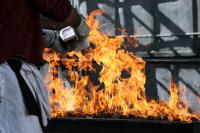Determine the oxidation number of NH3
Many students struggle with determining oxidation numbers in chemistry classes. In particular, compounds that are not immediately obvious, such as NH3, often cause problems. But if certain rules for determining oxidation numbers are followed, the calculation should no longer be a problem for most compounds.

Rules for determining oxidation numbers
Before you check the oxidation numbers of the compound NH3 you should understand some basic rules that govern this Counting be determined.
- All metals receive positive oxidation numbers.
- If fluorine is part of a compound, it always has the oxidation number -1.
- Hydrogen, on the other hand, usually has the oxidation number +1. Compounds that belong to the group of hydrides are an exception.
- The oxidation number of oxygen is given the oxidation number -2. Exceptions are compounds with fluorine or peroxides; here the oxidation number is -1.
- If these rules are followed, you can easily determine the oxidation numbers of the remaining reactants.
- The group number of the atoms in question can be of help here, which can also be the oxidation number.
- Always remember that the oxidation numbers are formal charges that indicate what charge the particle in question would have if the atoms were viewed as ions.
- Overall, uncharged connections are neutral to the outside, which means that there must be as many negative as positive charges.
Oxidation number of methanol - information
Oxidation numbers are one of the central concepts in chemistry. They are used to ...
So the oxidation numbers of NH3 determined
- With this knowledge you can determine the oxidation number of the compound NH3 determine. For this purpose, look again at the above list and see whether one of the mentioned components is included.
- You notice that there are a total of three hydrogen atoms (H) in the compound. According to the above rule, this always receives a simple positive charge, as long as the compound is not a hydride. Since NH3 cannot be counted among these, the hydrogen in the compound receives a three-fold positive charge.
- Now only the nitrogen (N) remains. This can in principle - depending on the other components of a connection - different Accept oxidation numbers, for example +5 (analogous to the group number), but also +4, +3, +2 or else -3.
- Since the connection has to be balanced overall and there are already three positive charges due to the hydrogen atoms, the nitrogen has to assume a triple negative charge; so he carries the charge -3.
How helpful do you find this article?



